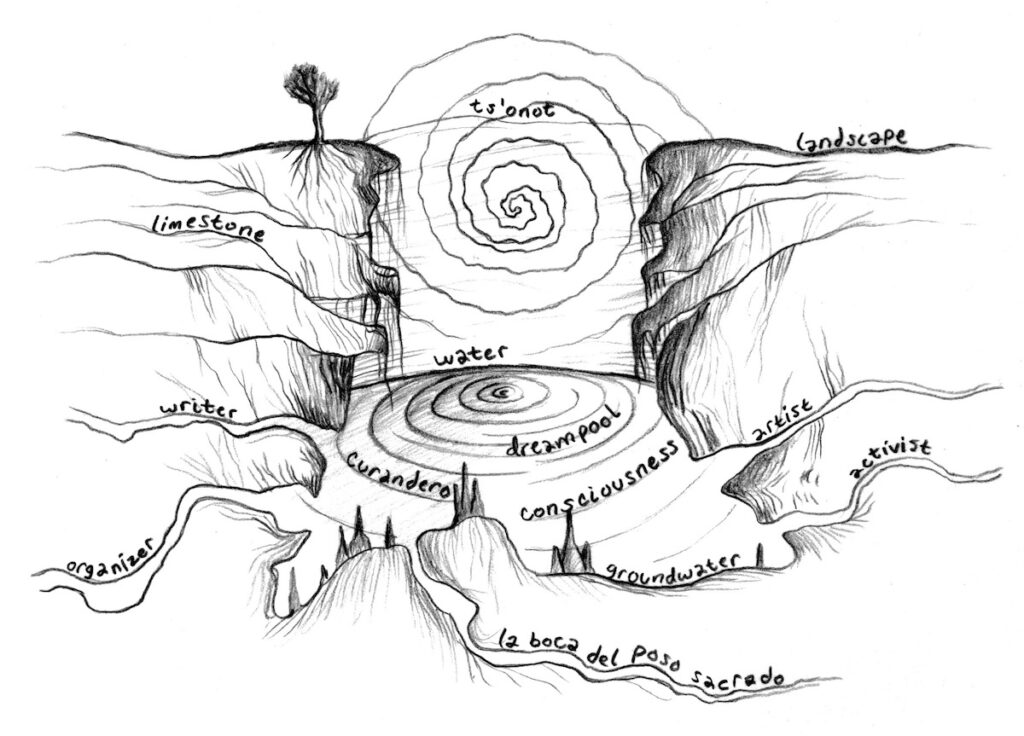
Matthew Flores & Ángel Lartigue
Ts’onot
Ts’onot is a series of micro-residencies taking place at The South Texas Human Rights Center, a community-based organization located in Falfurrias, Texas. STHRC is dedicated to preventing migrant deaths and assisting families in locating missing loved ones due to militarization near the U.S.-Mexico border.
Ts’onot is derived from the Yucatec Mayan language and means land location with accessible groundwater. According to Gloria Anzaldúa, ts’onot, or el cenote, is an archetypal inner stream of consciousness or dream pool, akin to a mental network of interconnected subterranean rivers.
In the spirit of Anzaldúa, Ts’onot is a social practice hub that brings together artists, writers, researchers,
activists, and organizers to The South Texas Human Rights Center for a 1-2 week research residency. Residents will engage with the humanitarian work of STHRC and its living space in Falfurrias to develop new or existing projects related to the landscape of South Texas.
Water plays a particularly important role in the environment and history of Falfurrias, as local curandero legend Don Pedro Jaramillo lived nearby at the turn of the twentieth century, and used the life-sustaining substance as an integral part of his holistic healing practice. The water stations that STHRC builds and maintains recognize the curative properties integral to Don Pedro’s communal healing. Residents will participate in refilling and maintaining the water stations in Brooks County and the surrounding area—an ongoing operation of STHRC that prevents migrant deaths from occurring as they circumvent highway border checkpoints. Water station construction will initially be taught under the direction of STHRC organizer Eddie Canales, Matt Flores, or Angel Lartigue.
Ts’onot also invites artists and community creatives through workshops led by residents in their respective craft in making space for dialogue and interaction with the work of STHRC, to dream possibilities for exploration beyond the borders of activism and artistic practice.
To follow Lartigue’s work, visit: https://www.angel-lartigue.com